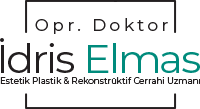Proper diet and exercise and a regular lifestyle are essential to get rid of excess weight. However, even people who meet these conditions may have stubborn fat deposits that do not go away. Certain areas of the body such as the abdomen, waist, hips, outer and inner thighs, and knees are areas of fat accumulation that are resistant to diet and exercise.
Lliposuction is a surgery that removes fat from the body by absorbing fat deposits in certain parts of the body with a special vacuum or special injectors. It is definitely not a weight loss surgery, but a body contour correction surgery. With this surgery, while the fat tissue that is increased in volume and resistant to diet and exercise is removed from the body, the number of existing fat cells is also reduced.
Although excess stubborn fat in deep layers is removed with liposuction, fat accumulations that cause contour irregularity can also be removed with the method called superficial liposuction or liposculpture developed in the last 10 years. The liposculpture technique has also become a method that gives definite results in removing skin sagging and eliminating stubborn cellulite. .
With the techniques that have been applied for 10 years, Iiposuction has taken its indispensable place in body contour correction. As long as the aim is not weakening, but contour correction, it is an operation without any risk if the safety limit is not exceeded, with a well-chosen patient, with a well-applied technique in hospital conditions. Today, the safety limit is accepted as 2.5-4.5 liters in different sources. There are those who take more fat. In this case, measures are taken to complete the patient's fluid and electrolyte balance, and sometimes a blood transfusion may be necessary. It has become possible to remove up to 28 liters of fat in a single session by taking necessary precautions in patients with excessive obesity called morbid obesity.
The operation is performed in hospital conditions in the operating room and under the supervision of an anesthesiologist. A combination of local anesthesia and sedation (intravenous sleep) is preferred. Only local anesthesia can be applied in very limited small areas. The operation takes between 1-5 hours, depending on the condition of the areas where vacuum will be applied. Cannula entry holes are usually not sutured or 1-2 sutures are placed. Sometimes, special thin tubes (resistors) are placed in the areas by using cannula holes, this helps to drain the serum accumulated inside. Depending on the extent of the surgery, it is possible to leave the hospital on the same day or after 24 hours.
Post-surgery is usually comfortable. The pain is very minor and can be relieved with medication. At the end of the surgery, a special bandage is applied to the vacuum applied areas and the patient is dressed in a special corset. After the operation, the patient is dressed. The patient continues to wear the corset for 5-6 weeks. There may be purplish color changes in the vacuum applied areas. There may be swelling, tingling and burning sensation. These disappear spontaneously within 3 weeks. The surgical scars also become vague within 2-6 months.
FREQUENTLY ASKED QUESTIONS
I want to have liposuction surgery. Who should I contact?
This is an aesthetic operation. It is absolutely necessary to apply to Plastic and Aesthetic Surgeons. Apart from this surgical branch, various surgeons say that they perform this surgery due to high demand. It will be in the best interests of the patients to research the area of expertise of the surgeon and then have the surgery.
Which areas are suitable for liposuction?
It has become possible to vacuum the fat deposits in many areas of the body such as under the chin, cheeks, neck, upper inner side of the arm, breasts, chest, abdomen, waist hip, thigh, inner side of the knee, back of the leg. It is also used as a complementary procedure in other body contour correction surgeries (tummy tuck, breast reduction, etc.).
Will there be any scars after liposuction?
The entrance holes of the cannulas (metal pipes that perform liposuction) are usually 2-4 mm. The traces that remain of them are vague. The scars in this surgery can be ignored.
How many liters of oil can be taken at a time? Can liposuction be done again?
A maximum of 4-5 liters of fat can be removed without disturbing the patient's balance and body functions. But there are also more areas by giving fluid and blood. This is the surgeon's choice. If the patient's areas are large, surgery can be performed again at intervals of 3-6 months.
It has become possible to vacuum the fat deposits in many areas of the body such as under the chin, cheeks, neck, upper inner side of the arm, breasts, chest, abdomen, waist hip, thigh, inner side of the knee, back of the leg. It is also used as a complementary procedure in other body contour correction surgeries (tummy tuck, breast reduction, etc.).
Will there be any scars after liposuction?
The entrance holes of the cannulas (metal pipes that perform liposuction) are usually 2-4 mm. The traces that remain of them are vague. The scars in this surgery can be ignored.
How many liters of oil can be taken at a time? Can liposuction be done again?
A maximum of 4-5 liters of fat can be removed without disturbing the patient's balance and body functions. But there are also more areas by giving fluid and blood. This is the surgeon's choice. If the patient's areas are large, surgery can be performed again at intervals of 3-6 months.
A maximum of 4-5 liters of fat can be removed without disturbing the patient's balance and body functions. But there are also more areas by giving fluid and blood. This is the surgeon's choice. If the patient's areas are large, surgery can be performed again at intervals of 3-6 months.
